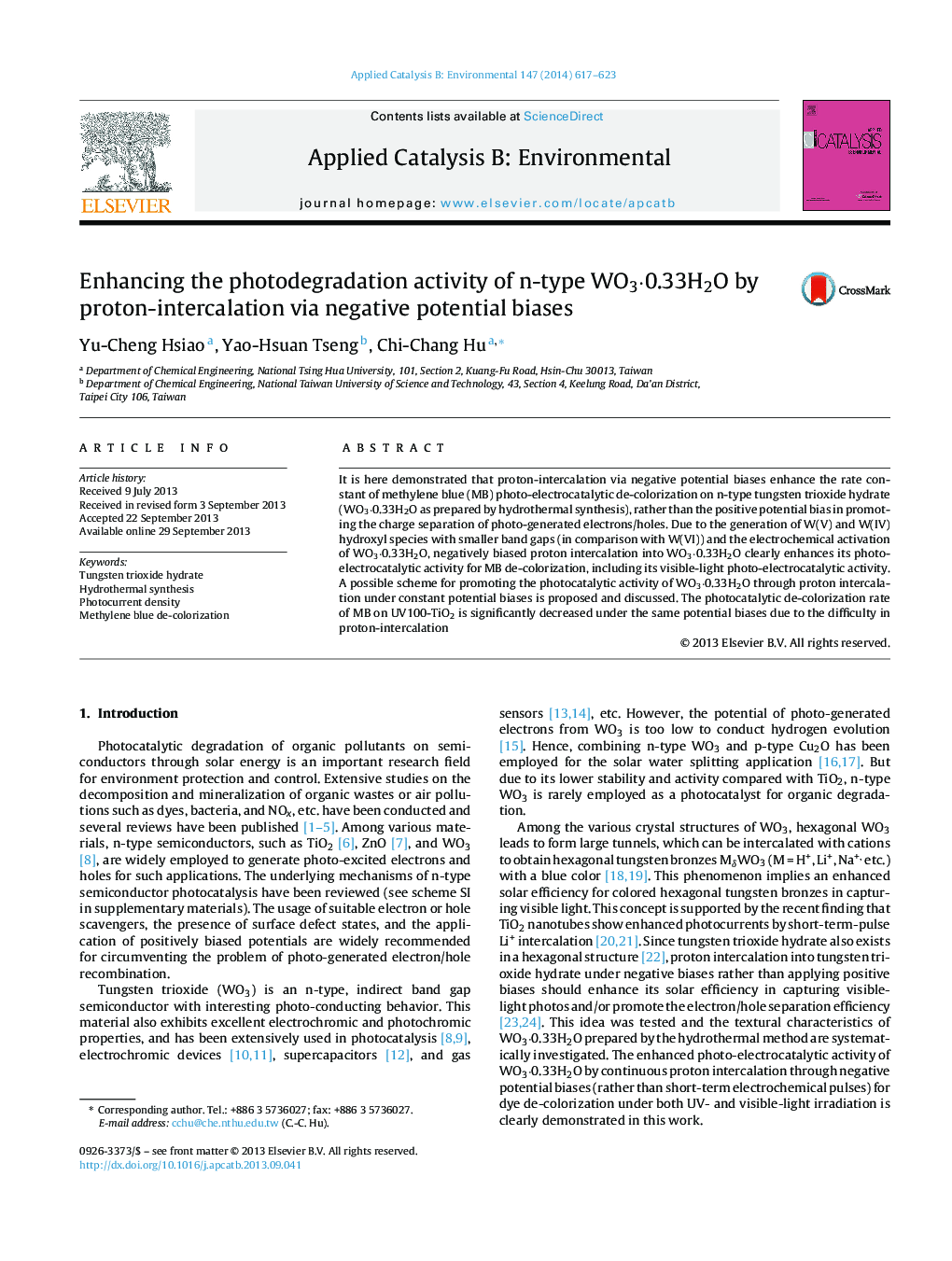| Article ID | Journal | Published Year | Pages | File Type |
|---|---|---|---|---|
| 6501941 | Applied Catalysis B: Environmental | 2014 | 7 Pages |
Abstract
In general, the photocatalytic degradation activity of an n-type semiconductor, such as TiO2, should increase with a positive potential bias because the positive potential bias could effectively hinder the recombination of photo-generated electrons and holes (path (a)). Therefore, the photocatalytic degradation rate of organics (e.g., MB in this work) on a TiO2-coated electrode is significantly decreased under the negative potential bias. For WO3·0.33H2O, its photocatalytic de-colorization activity increased with negative potential biases due to proton intercalation which produces more photo-sensitive W(IV), W(V), and W(VI) species in WO3·0.33H2O (state (2) in path (b)). When the UV- or visible lights are irradiated on the photo-electrode, not only the UV-light-sensitive sites are activated (path (i) of state (3) in path (b)) but also the visible-light-driven sites are created under the negative potential bias (path (ii) of state (3) in path (b)). This effect is more significant than that of photo-generated electrons/holes recombination due to the negative potential bias. Therefore, the WO3·0.33H2O can generate a lot of photo-excited electrons and holes to react with O2 and water/OHâ(to generate highly active species (e.g., or O2â· or OH·) for MB de-colorization.
Related Topics
Physical Sciences and Engineering
Chemical Engineering
Catalysis
Authors
Yu-Cheng Hsiao, Yao-Hsuan Tseng, Chi-Chang Hu,
